The Vietnam Museum of Ethnology, a precious gem in the heart of Hanoi, is not only a place preserving invaluable cultural values of 54 ethnic groups but also an attractive destination for domestic and international tourists. If you are planning to explore this unique cultural space, let “Du lịch khắp thế gian” (Travel Around The World) provide you with the most detailed guide to visiting the Vietnam Museum of Ethnology, making your journey more complete and meaningful.
General Introduction to the Vietnam Museum of Ethnology
The Vietnam Museum of Ethnology is located on Nguyen Van Huyen Street, Cau Giay District, Hanoi, a convenient location easily accessible from the city center. This place is not just a museum but also a leading cultural research center in Vietnam, contributing to the preservation and promotion of precious traditional values.
Essential Information:
- Address: Nguyen Van Huyen Street, Cau Giay District, Hanoi.
- Entrance Fees:
- Adults: 40,000 VND/person.
- Students: 15,000 VND/person.
- Pupils: 10,000 VND/person.
- Elderly, disabled people, ethnic minorities: 50% discount.
- Children under 6 years old, severely disabled people, ICOM card holders, press card holders, sponsors: Free.
- Service Fees:
- Vietnamese guide (indoor/outdoor): 50,000 VND/tour.
- English/French guide (indoor): 100,000 VND/tour.
- Opening Hours: 8:30 AM – 5:30 PM daily, open all days of the week, except for some public holidays with separate announcements.
The Vietnam Museum of Ethnology was established in 1995, as a result of cooperation between the Vietnamese and French governments. The museum’s unique architecture is a harmonious combination of ideas from architect Ha Duc Linh, a member of the Tay ethnic group, and French architect Véronique Dollfus. With a large area of 4.4 hectares, the museum is divided into many indoor and outdoor display areas, vividly and diversely introducing the material and spiritual culture of the 54 ethnic communities of Vietnam. This place attracts visitors not only by the richness of artifacts but also by the scientific and attractive arrangement, helping viewers easily access and understand more deeply about Vietnamese cultural identity.
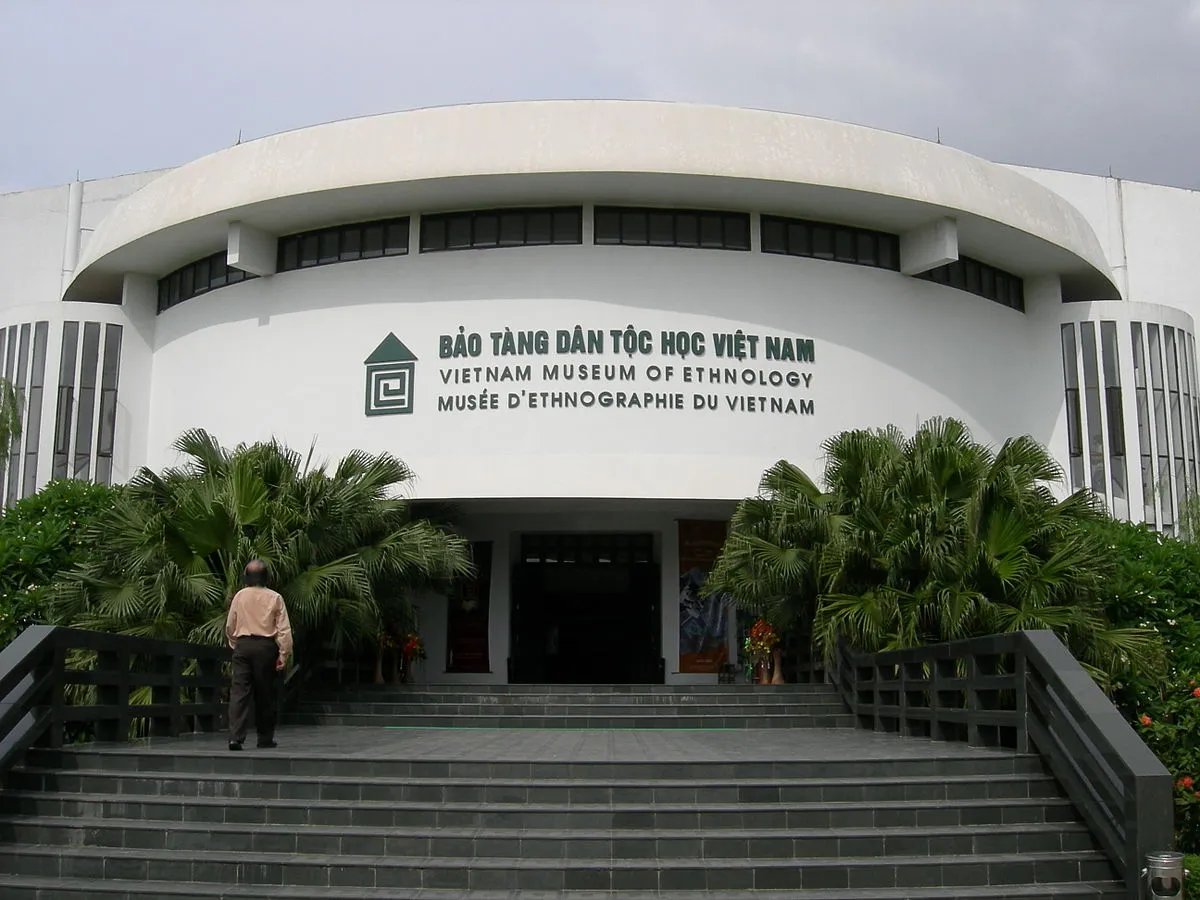
Explore the Unique Architecture of the Vietnam Museum of Ethnology
One of the highlights when visiting the Vietnam Museum of Ethnology is the unique and harmonious architecture of the display areas. The museum is divided into three main areas: the indoor exhibition area, the outdoor architectural garden, and the Kite exhibition area, each area offering different exploration experiences.
Outdoor Architectural Garden
The outdoor architectural garden is a large space of up to 2 hectares, realistically and vividly recreating traditional house styles of 10 typical ethnic groups across Vietnam. Stepping into the garden, you will feel like you are lost in a miniature Vietnam with a full range of typical architectural types such as the Rong house of the Ba Na people, the long stilt house of the E De people, the stilt house of the Tay people, the tiled house of the Viet people, the tomb house of the Gia Rai people, and more. Each architectural work is not only built according to the original model in terms of size and materials but also arranged with living and activities spaces around it, helping visitors feel most clearly about the cultural life of each ethnic group.

Walking in the architectural garden, you will admire the diversity in housing architecture of ethnic groups, from sturdy wooden stilt houses to unique earthen wall houses, from simple thatched roofs to bright red tiled roofs. Each type of house carries its own cultural, historical, and aesthetic values, reflecting the economic, social life and customs of that ethnic community. This is not only an exhibition area but also a living cultural space where visitors can learn, explore, and experience the unique features of Vietnamese architecture.
Trong Dong (Bronze Drum) Indoor Exhibition
The Trong Dong (Bronze Drum) exhibition area is the main indoor display area, designed in the shape of a Bronze Drum, a cultural symbol of Vietnam. This area consists of two floors, introducing an overview and detailed information about the culture of 54 ethnic groups in Vietnam.
The first floor is a common display space about 54 ethnic groups, introducing their residence, language, costumes, customs, economic, cultural, and social activities. The artifacts are displayed in a diverse and rich manner, including traditional costumes, labor tools, musical instruments, household items, religious and belief items. In addition to artifacts, the museum also uses many images, diagrams, maps, video clips to illustrate and clarify information about each ethnic group.

The second floor delves into the culture of some typical ethnic groups, divided into separate display areas such as the Vietnamese culture area, the Central Highlands ethnic culture area, the Northern mountainous ethnic culture area, the Cham, Khmer, Hoa ethnic culture area, and more. Here, visitors can learn more deeply about the history, culture, customs, arts, religions, beliefs of each ethnic group. The artifacts displayed on the 2nd floor are also more diverse and richer, including rare artifacts of high historical and cultural value.
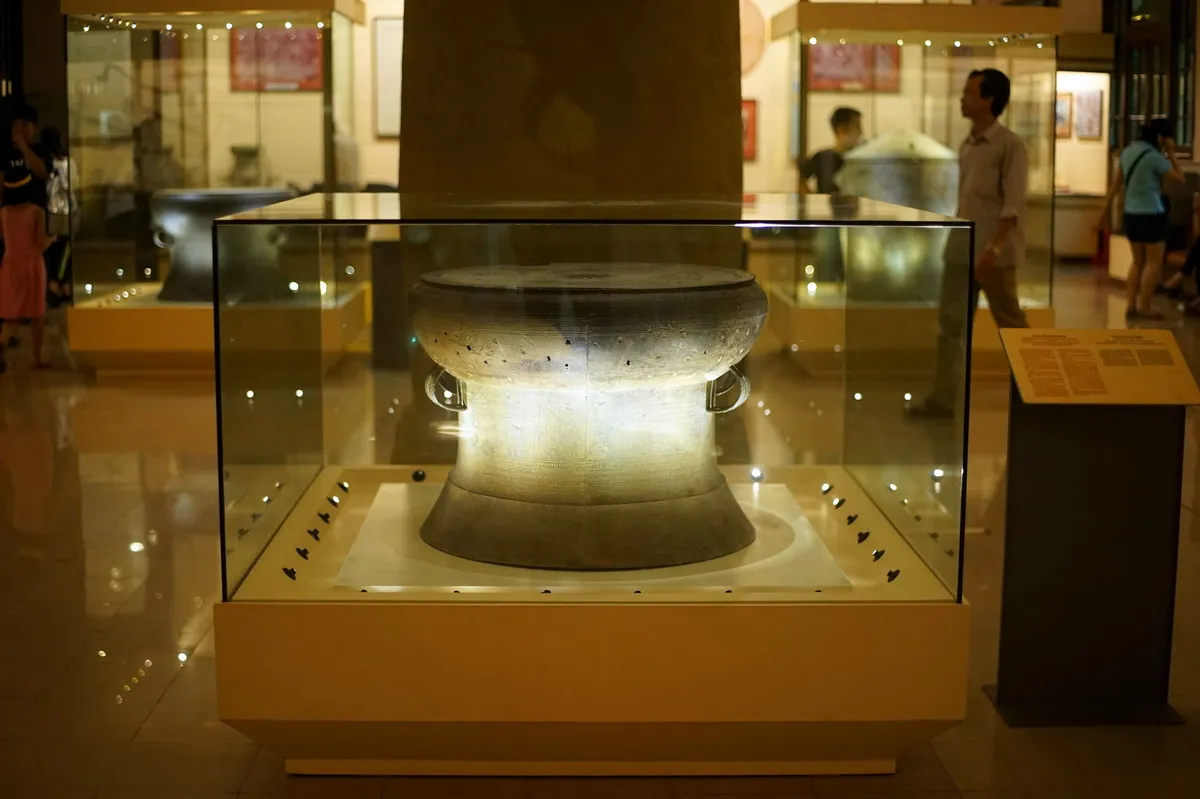
Kite Exhibition Area
The Kite Exhibition Area is a special display area, introducing the cultural exchange relationship between Vietnam and countries in Southeast Asia. This area is designed in the shape of a kite, a familiar image in Vietnamese folk culture, symbolizing the dream of reaching high and far.
At the Kite Exhibition Area, visitors will discover the similarities and differences in culture between Vietnam and neighboring countries such as Laos, Cambodia, Thailand, Indonesia, Malaysia, Philippines, and more. The exhibits focus on topics such as agriculture, traditional handicrafts, costumes, festivals, beliefs. Through this, visitors can see the cultural interference, learning, and acculturation between countries in the region, and better understand Vietnam’s position and role in the Southeast Asian community.
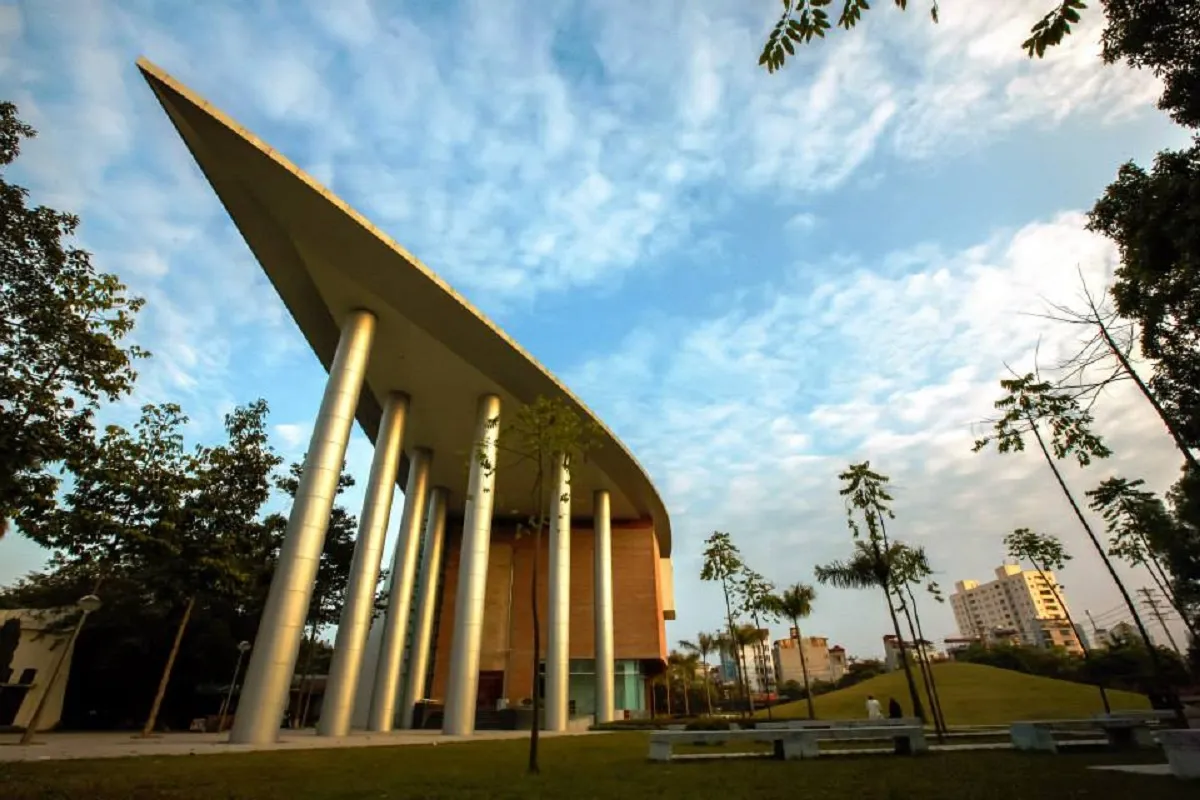
Experience Unique Cultural Activities at the Museum
The Vietnam Museum of Ethnology is not only a place to display artifacts but also a vibrant cultural center, regularly organizing unique cultural and artistic activities, attracting a large number of visitors to participate.
Water Puppetry: Water puppetry is a unique traditional art form of Vietnam, with a history of thousands of years. At the museum, visitors can enjoy unique water puppet shows, elaborately staged, recreating fairy tales, legends, and daily life of Vietnamese people. Water puppetry is not only a form of entertainment but also a way to preserve and promote traditional cultural values.
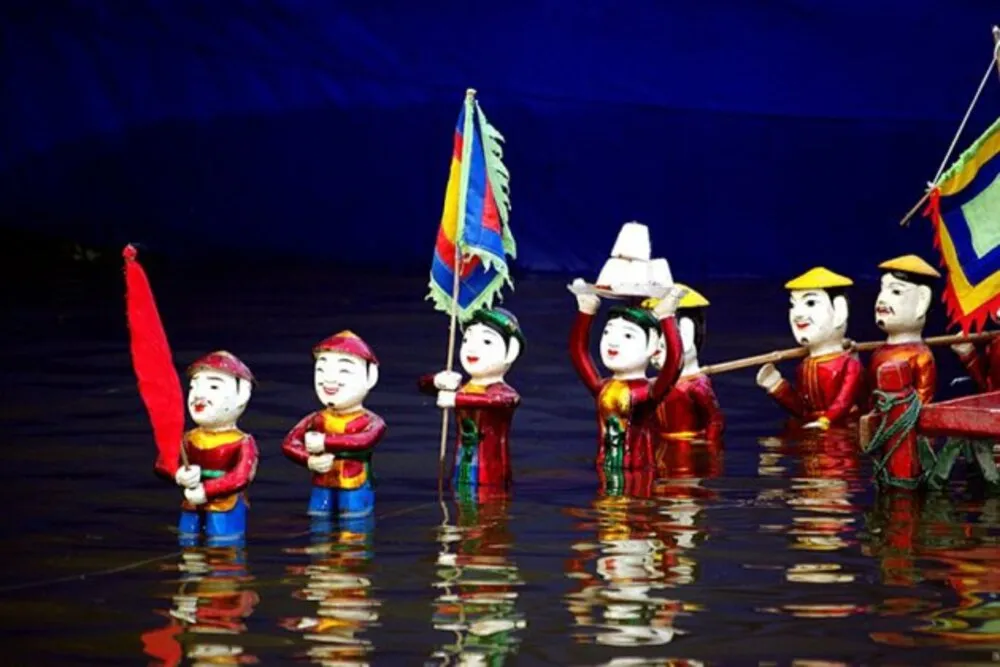
Bac Ninh Folk Songs (Quan Ho): Quan Ho Bac Ninh is a unique folk song genre of the Kinh Bac region, recognized by UNESCO as an Intangible Cultural Heritage of Humanity. Coming to the museum, visitors have the opportunity to hear sweet and deep Quan Ho melodies, performed by Quan Ho artists. This is a unique cultural experience, helping visitors understand more about the beauty of Vietnamese traditional music.
Folk Games: The Vietnam Museum of Ethnology regularly organizes traditional folk games such as throwing cones, swings, monkey bridges, blindfolded goat catching, tug of war, etc. on holidays, weekends, or special events. Participating in folk games not only brings moments of fun and relaxation but also helps visitors learn about Vietnamese culture and customs.
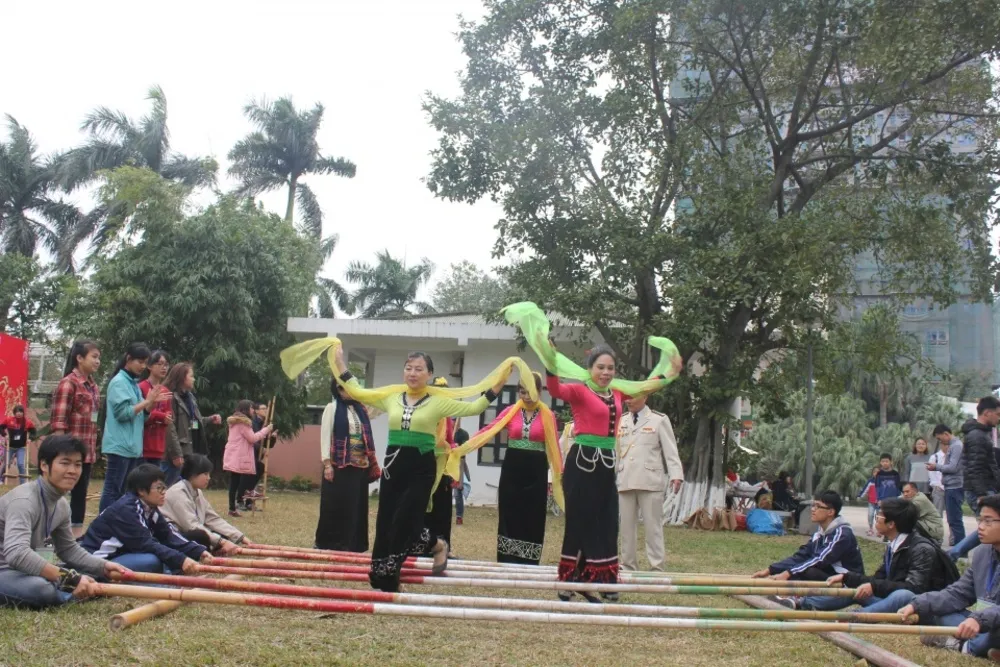
Souvenir Shop: After visiting and experiencing, visitors can visit the museum’s souvenir shop to purchase unique gifts, imbued with Vietnamese cultural imprints. Here, you can find handicrafts, jewelry, traditional costumes, books, CDs, souvenirs, and more. These are meaningful gifts for you to give to relatives, friends, or keep as souvenirs of your visit to the Vietnam Museum of Ethnology.
Visitor’s Guide to the Vietnam Museum of Ethnology
To make your visit to the Vietnam Museum of Ethnology convenient and complete, you should note some of the following tips:
Transportation: The museum is located in the city center, easily accessible by various means of transport such as motorbike, car, bus, taxi, etc. If you want to be proactive and comfortably explore Hanoi, renting a motorbike is a good option. In addition, public buses are also an economical and convenient means to get to the museum.
Hire a Tour Guide: To understand more deeply about the artifacts and cultural stories behind them, you should hire a tour guide. The museum has a team of professional guides, knowledgeable about ethnic culture, who can guide in Vietnamese, English, French and some other languages. You can register to hire a guide in advance or when buying entrance tickets.
Notes During the Visit:
- Wear comfortable shoes for easy movement in the large grounds of the museum.
- Bring a hat, sunscreen if visiting in the summer or at noon.
- Prepare drinking water to avoid dehydration when walking a lot.
- Maintain general hygiene, do not litter in the museum grounds.
- Do not touch exhibits to protect cultural values.
- Comply with the museum’s regulations, do not bring food, drinks, or pets into the exhibition area.
- Keep order, do not make noise, affecting other visitors.
Conclusion
The Vietnam Museum of Ethnology is a cultural destination not to be missed when coming to Hanoi. This place is not just a simple museum but also a vibrant cultural space where you can discover, learn and experience the unique cultural values of 54 ethnic groups in Vietnam. Hopefully, with the detailed guide to visiting the Vietnam Museum of Ethnology above, you will have a truly meaningful and memorable trip.